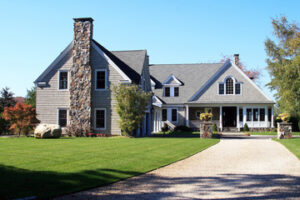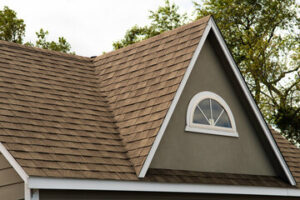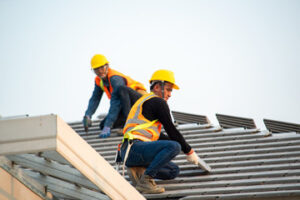Roofer Round Rock is an important part of your home that protects against rain, snow, sunlight, and temperature extremes. Roofing materials come in various options, from the lightweight asphalt shingles popular with DIYers to more luxurious clay or slate tiles.
Choosing the right roof depends on your house is location and the weather conditions it regularly experiences. A reliable home expert can guide you.

Asphalt shingles are still a common roofing material that offers many benefits to homeowners. They are durable and offer a range of colors and textures to complement any home’s aesthetic. Many are fire-resistant, and some even help reduce energy costs.
They can be installed on most homes and are easy to maintain with regular cleaning. They are also good insulators, reducing sound from rain or other outdoor noises. Compared to other roofing materials, they are less expensive to install and are durable enough to last for years.
There are two standard design options for asphalt shingle roofs: architectural or three-tab. Three-tab shingles are simple and flat, making them easier and cheaper to install. However, they are not as durable and do not carry the same manufacturer’s warranties as a well-installed architectural or dimensional shingle.
Regardless of the type of shingle, it is vital to choose a reliable and experienced roofer. A reputable company will use high-quality materials to ensure your roof lasts for the long-term and resists weather damage. In addition, they will provide a warranty that covers both the materials and labor.
Some shingles are designed to be impact-resistant, which is an important consideration for areas with frequent severe storms and hail. IKO Nordic shingles, for example, are backed by a Class 4 impact resistance rating. While this rating is not a guarantee of impact resistance, it may allow you to qualify for a reduction in your insurance premium, if available in your area.
Another consideration when choosing a new roof is the level of energy efficiency. Depending on the color, light, medium and dark shades of asphalt shingles reflect solar heat and help keep your living spaces cooler. Combined with proper ventilation and meeting Department of Energy recommendations for attic insulation, this will reduce cooling bills.
Some shingles are designed to lock together, called tie-lock or T-lock. This is a convenient and attractive option, but it should be used with caution as it can increase the weight of your roof. In addition, if there are bare spots on your roof, it is a good idea to install the locking shingles as soon as possible to prevent water leaks and other damage.
Wood shakes and shingles are a classic roofing option for homeowners who want to achieve a rustic look. They are made from a variety of woods, including cedar, cypress and pine. They are available in different widths, thicknesses and shapes to suit your roof design. Wood shingles are usually stainable, so you can choose a color that matches your home. They also have a timeless beauty that makes them popular for both colonial and mountain-style homes.
While they are durable, they have a downside: They can be vulnerable to fire and moisture. You can protect them with certain treatments and coatings, but they will need frequent application. They are also prone to rot and algae growth, so they may require more frequent inspections. Additionally, they can be a fire risk in homes located in high-fire danger areas.
When deciding on wood shingles, consider the type of grain you want. A shingle or shake with an edge grain is cut perpendicular to the tree’s rings and has a higher degree of stability. A shingle or shake with a flat-grain is cut parallel to the rings and is less stable, which can lead to splitting over time.
The type of grain you choose will also affect the look and cost. A shingle with an edge-grain is more expensive than one with a flat-grain, but it is more durable. It is also more likely to resist damage from wind and moisture.
Wallaba shingles are a great alternative to traditional shakes for homeowners in tropical climates. These shingles are treated with a gummy resin to make them resistant to bugs, fungus and corrosion. They are also termite-resistant and can withstand high rainfalls. As they age, the shingles become silvery-gray and reflect light, keeping homes cooler in equatorial climates. Additionally, wallaba shingles are treated with minimal chemicals and decompose naturally into the earth, reducing environmental impact.
Concrete roof tiles are a civil construction material that, over time, have gained traction among modern homeowners for their practicality and appearance. While they are not as cheap as some of the shingling options available, they also tend to last longer and often look much better. With today’s manufacturing techniques, concrete tiles no longer have to look like gritty gray slabs of cement; instead, they can mimic the appearance of fine ceramics.
In fact, concrete tile manufacturers now offer a wide variety of color and texture options for their products, from organic textures that replicate wood or stone to finishes that resemble tire treads or clouds. Additionally, these roof tiles can be molded to fit any roofing space. And, unlike asphalt shingles, they’re not flammable.
These tiles are made by mixing cement, aggregates, and sand. To this mix, pigments are added that will tone the final product, and the result is then shaped into individual tiles. In some cases, the tiles are pressed in large molds, but most are cast. Depending on the manufacturer, these tiles can be produced at relatively high speeds.
Once the tiles have been shaped, they are treated with water-based masonry sealants to prevent water absorption and staining. This is important because without proper waterproofing, rainwater, moisture from falling leaves and other debris, and air moisture can seep into the home and cause a number of problems, including mold, mildew, and rot.
When compared to clay tiles, concrete tiles are typically less expensive. However, they are more than 40 percent heavier than their clay counterparts and can put a great deal of strain on the roof structure, especially if it isn’t rated for that weight. This is why a professional should inspect the structure of a home before recommending concrete tiles.
Luckily, some concrete tile manufacturers now produce lightweight versions of their products that can reduce the load on the roof and save money on energy bills. They can also be treated to withstand freeze/thaw cycles, which increases their appeal for homes in climates that experience harsh winter weather.
Metal roofs are popular among homeowners that want the traditional look of shingles or tile but desire the durability and longevity of metal. They are also favored for their strength, resistance to mildew and algae growth, low weight, and fire safety, and they can sometimes help lower insurance premiums.
Today’s metal roofs have evolved from corrugated sheets and standing seams found on barns and sheds to options that can match any architectural style. These can include metal shingles that resemble shingle styles, stone-coated steel shingles and even clay tiles. They can work on modern, contemporary, Tudor, Craftsman and Victorian designs as well as more rural homes with slate and wood shakes.
Unlike most other roofing materials, which are typically layered and fastened with nails or shingles, metal panels are attached to the roof decking or framing using clips or screws that are hidden from view or concealed. Because they are often fabricated in large panels, the installers have to carefully align the panels and seam them together with precision. This is typically done with a snap-lock system that requires the correct spacing of the clips or mechanically seamed with hand or robotic tools. These methods can require extra time and labor and may result in the need for a larger crew.
Another factor to consider is the potential for oil canning, a phenomenon that happens when light-gauge metal panels expand and contract with temperature changes. It causes a waviness that is unsightly. Most metal suppliers will treat the material with an anti-oxidizing coating to prevent this.
A metal roof’s upfront cost is higher than that of a shingle roof, but it can last a lifetime and can significantly reduce energy costs. It can also reduce the need for repairs and maintenance. Additionally, since it doesn’t absorb heat as easily as shingles and other roofing materials, it is less likely to increase the load on an air conditioner, which can save on energy bills during the summer. It is also more resistant to damage from hail and high winds. It can even add value to the home and potentially raise a property’s appraised value.


